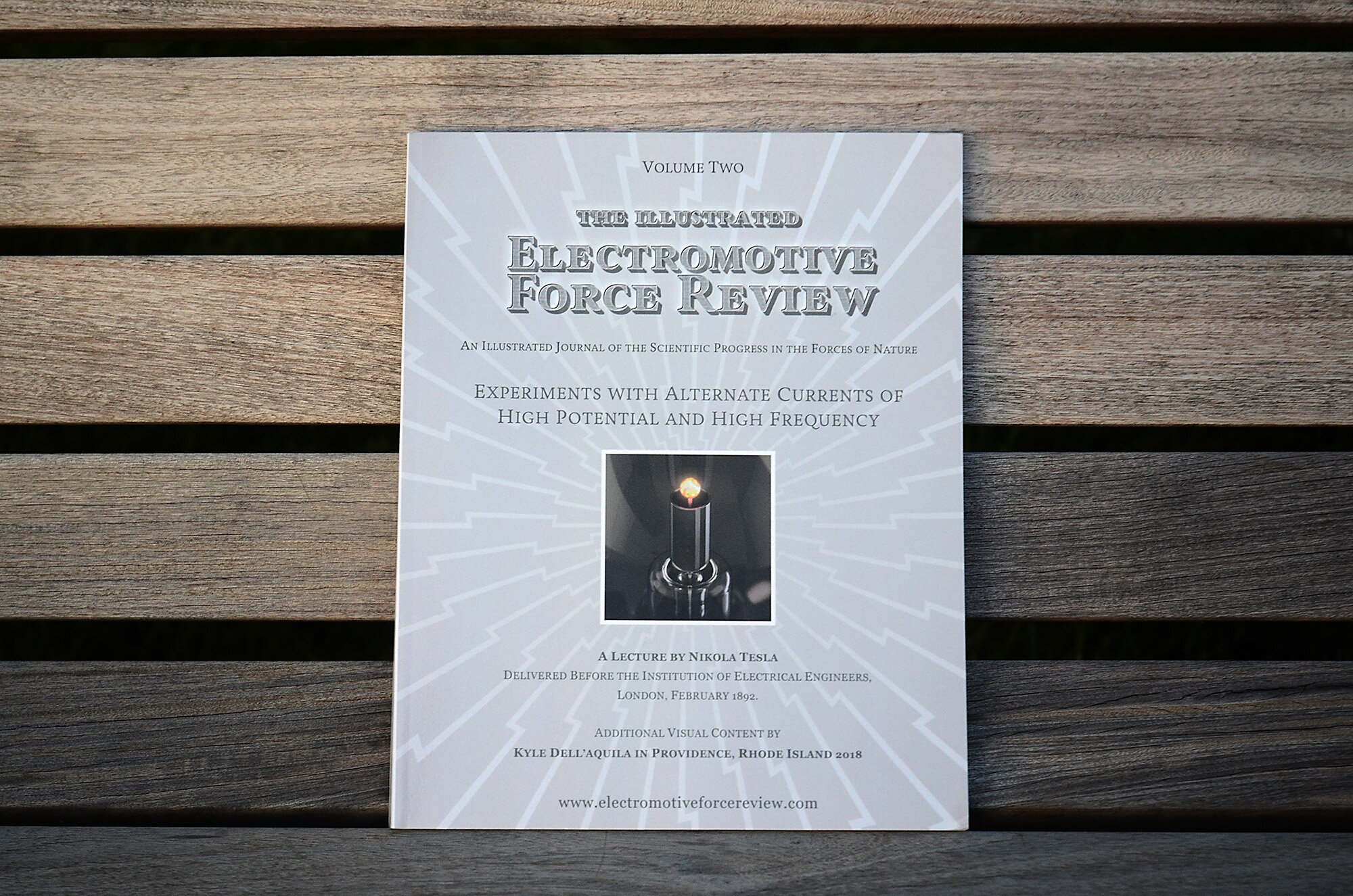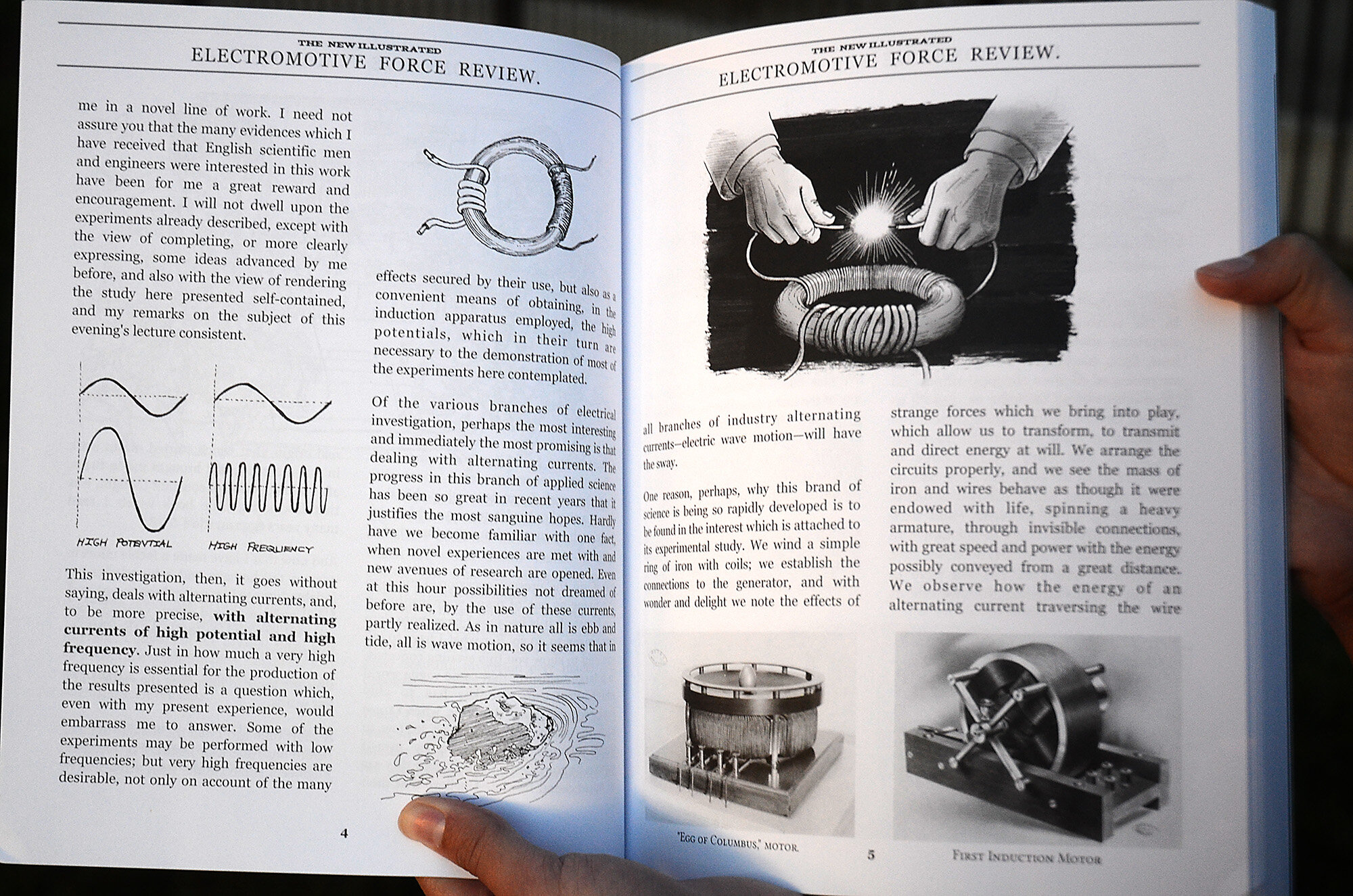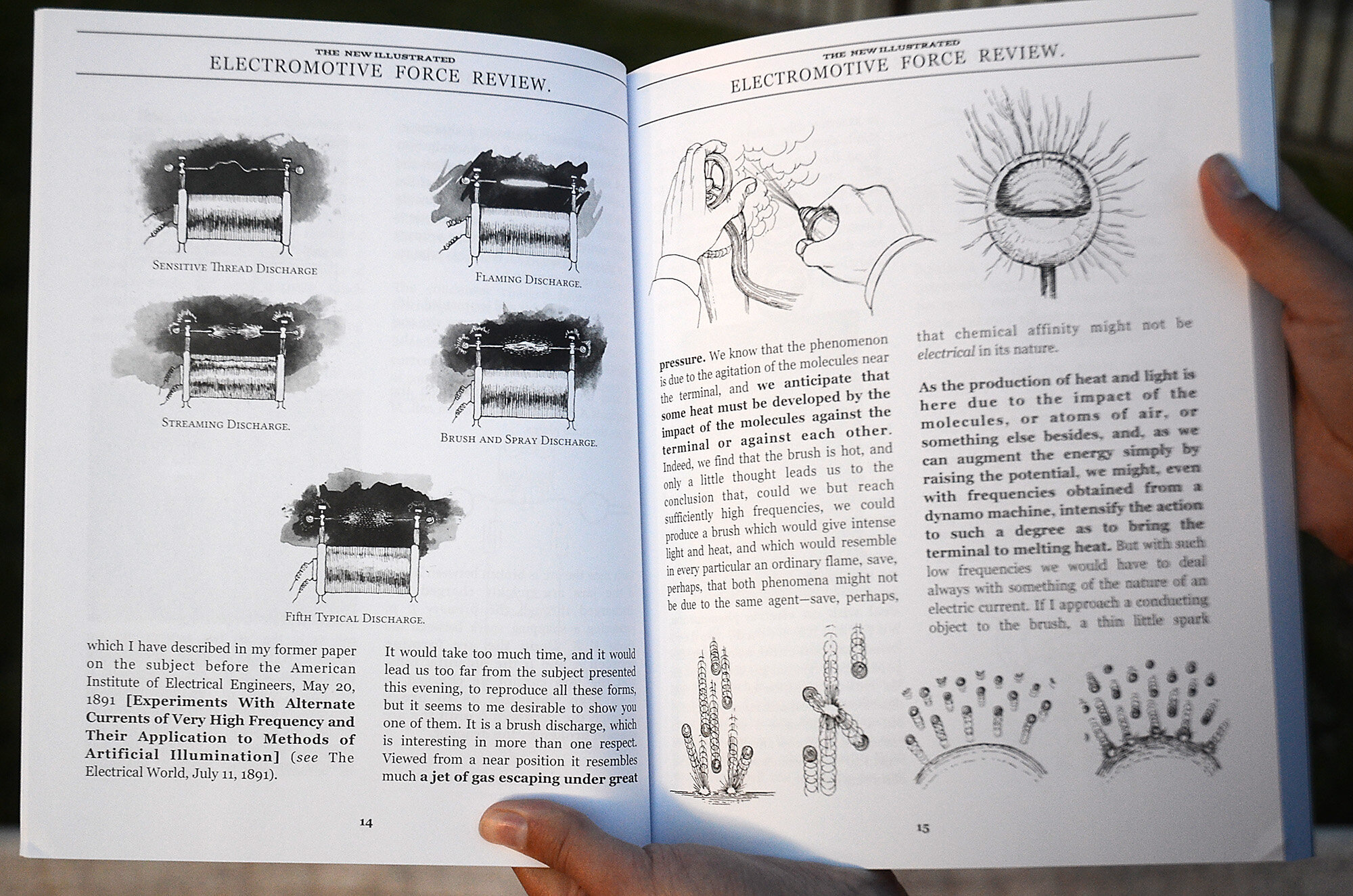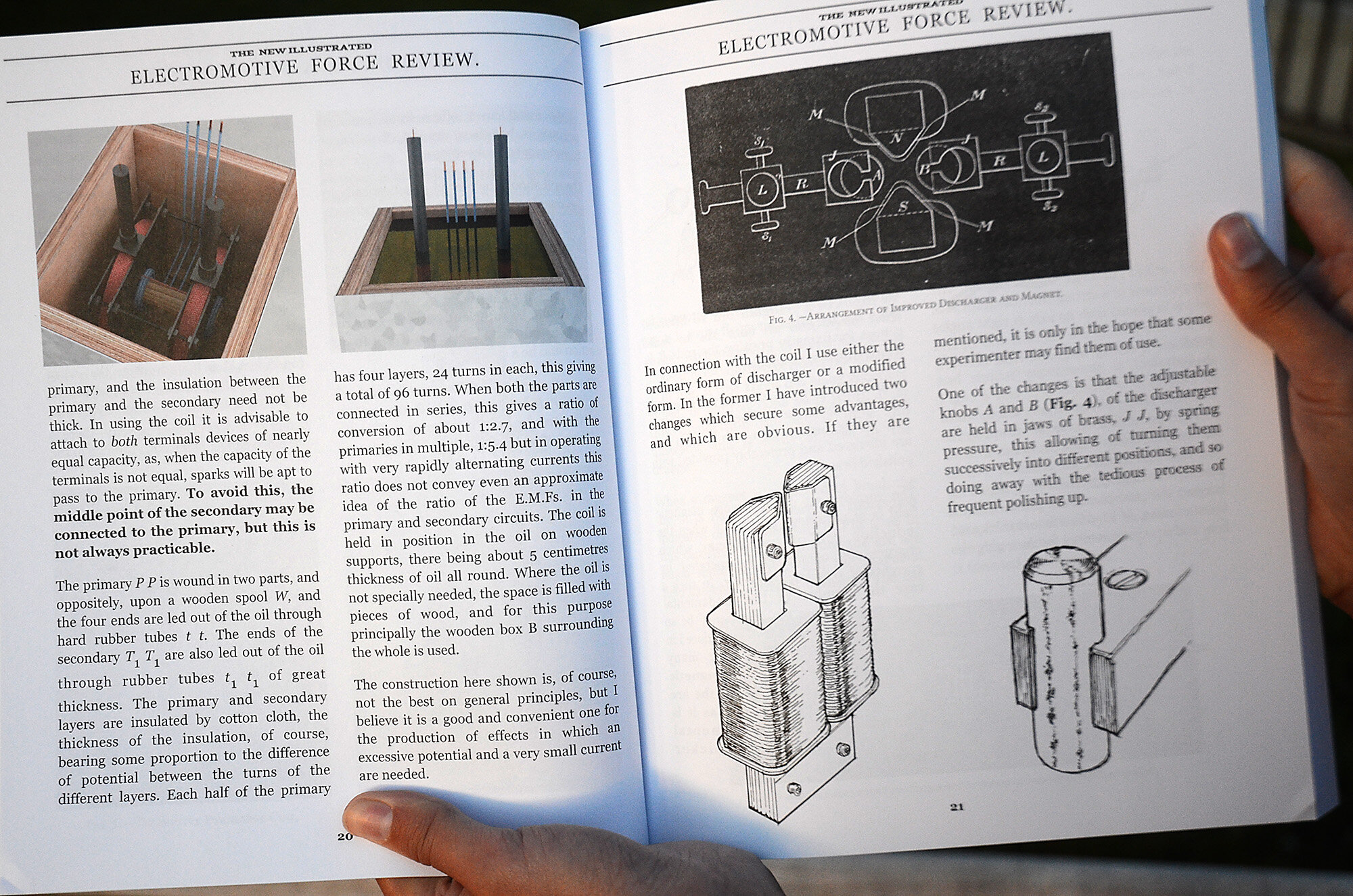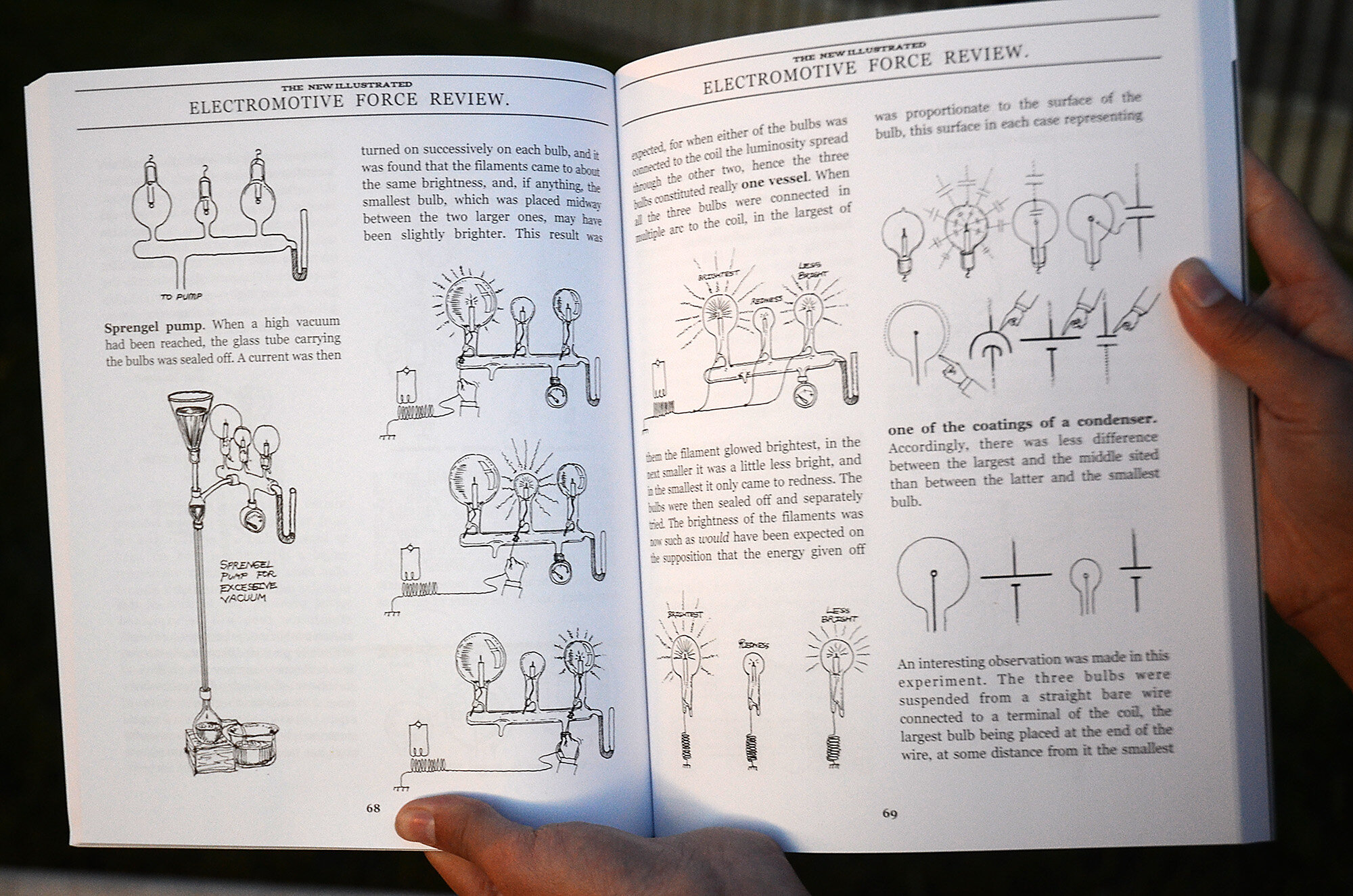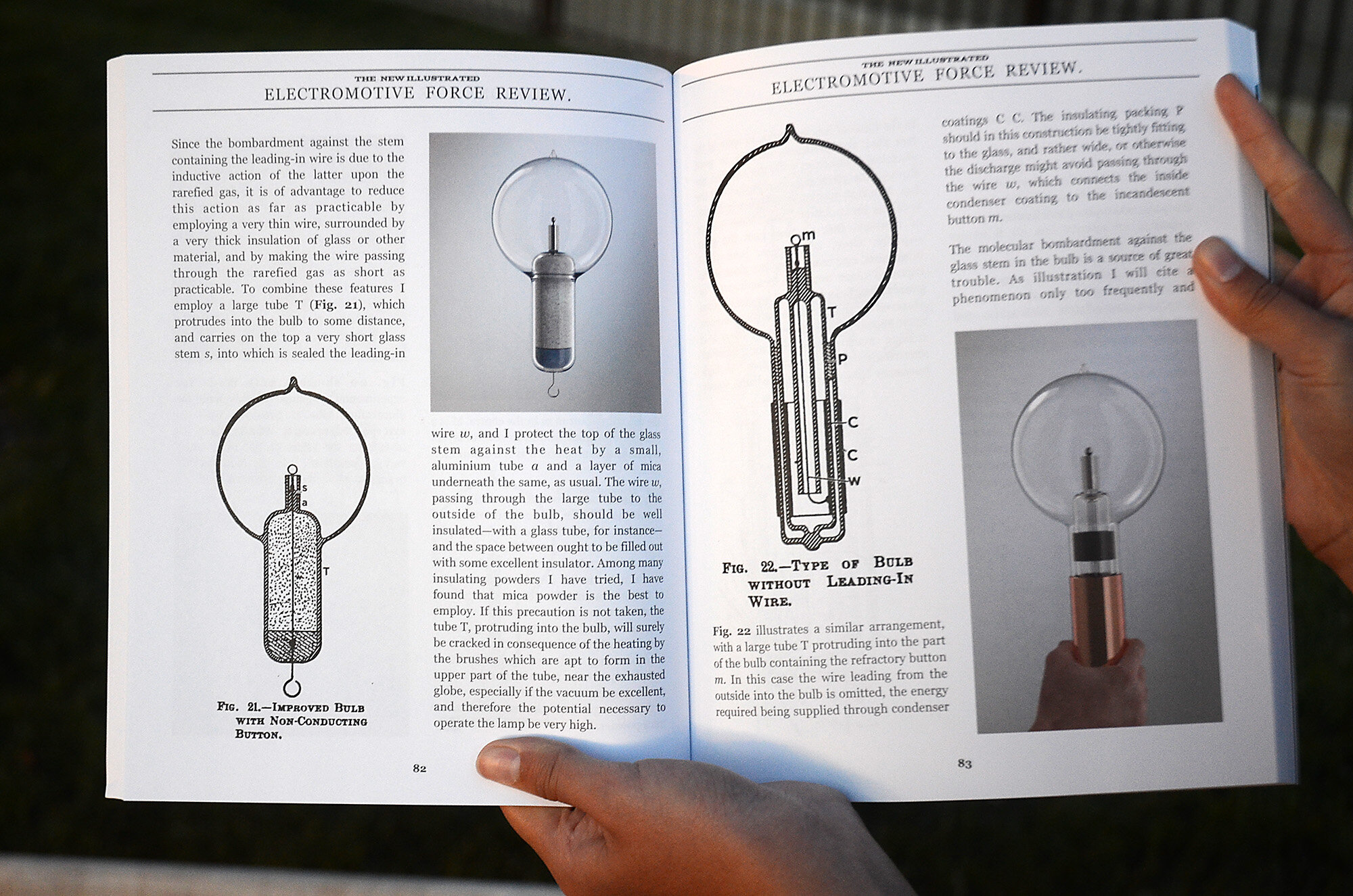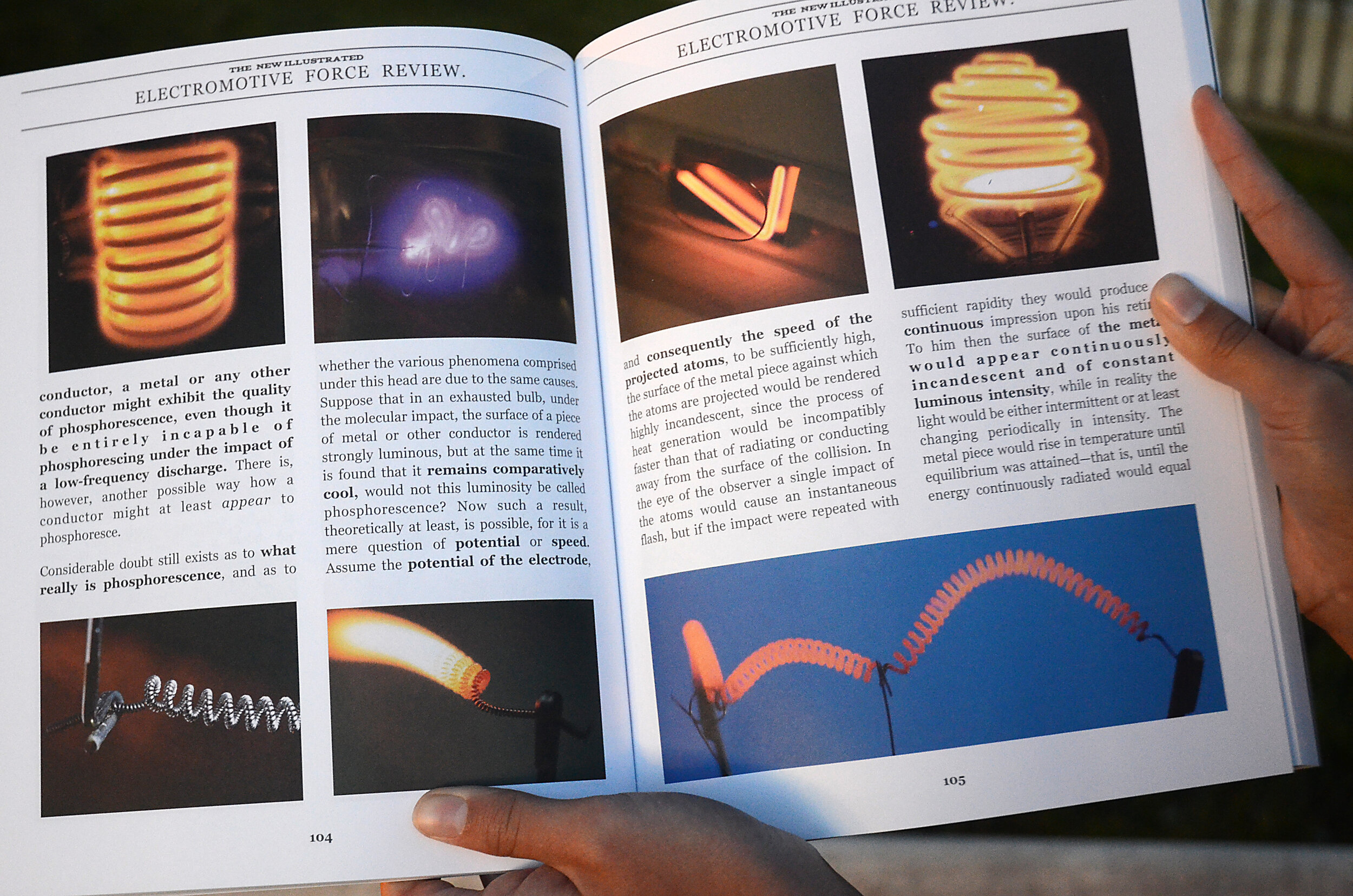Easy to Understand
Visually Translated
hundreds of pictures
For Ages 2+
In the previous installment of the Electromotive Force Review, we were introduced to the various conditions of electrical phenomenon by the esteemed engineer Nikola Tesla in his 1891 landmark lecture, “Experiments With Alternate Currents of Very High Frequency and Their Application to Methods of Artificial Illumination.” Mr. Tesla wrote about the various conditions of energy transfer and in which conditions conductors and insulators switch roles. He focuses our attention on the two conditions of electrical pressure and flow. There are two states of force: static and electro-magnetic. Mr. Tesla describes the phenomena of static electricity as the area under strain while electro-magnetism as the area under motion. Electrostatic waves, or thrusts, give rise to energy transference and luminous effects with much greater ease compared to electro-magnetic waves.
The next issue of the Electromotive Force Review, “Experiments with Alternate Currents of High Potential and High Frequency,” written 8 months later, he elaborates on the nature of light and how to reproduce its various forms more efficiently by working with excessively high pressures and frequencies. Mr. Tesla specifically points out the interaction of the molecules surrounding the conducting elements at various atmosphere pressures and how heat is developed by the interaction between the two. He shows an evolution of efficiency with a series of equipment for reproducing light.
I first discovered “Experiments with Alternate Currents of High Potential and High Frequency” from Ernst Willem van den Bergh’s collection of Mr. Tesla’s works. This lecture inspired me to create visual translations of these lectures and is now supported by new illustrations and renderings depicting the variety of equipment seen on stage about 126 years ago. The renderings of the bulbs and their associated effects were produced in Blender, a free and open source 3D creation suite. I deeply extend my gratitude to the Blender community who enabled me the tools to reproduce the studies depicted in this lecture.
I want to inspire similar minds and dispel the mysteries of our universe. To go into the future, we must first go back.
-Kyle Longean Dell’Aquila
陳龍吟

